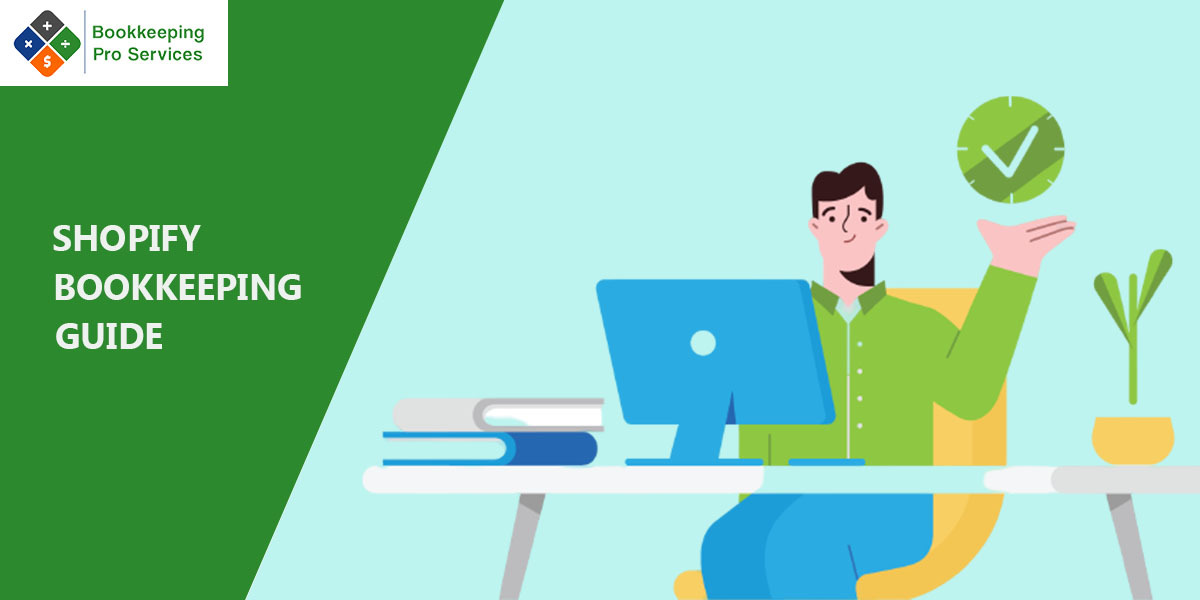- info@bookkeepingproservices.com
- 1390 W. 6th St. #120 Corona, CA 92882
Shopify Bookkeeping Guide
sfsdfsdfsdf

Shopify Bookkeeping Guide
Shopify Bookkeeping is vital for all Shopify businesses but for small and midsized e-commerce Shopify store owners it's a matter of survival. Proper bookkeeping helps you track expenses, manage cash, and keep a record of all transactions for tax preparation.
Whether you're a veteran Shopify seller or a newbie you need to channel an Ecommerce/Shopify Bookkeeping system in place to track the health of financial figures that are vital for your business growth and success.
Why Shopify Bookkeeping is Necessary
Bookkeeping is necessary for Shopify's store e-commerce business to help organize financial documentation and records. Through accurate bookkeeping, you can keep track of expenses, cash in hand, bank reconciliation, loans, financing, and other payment processing platform balances that are vital for Amazon's business success.
Here is the list of benefits of Shopify store bookkeeping:
- Bookkeeping for Shopify keeps records of all relevant records that are necessary for Tax filing
- It helps avoid any Tax Audits, fines, and penalties.
- It helps organize all accounting records
- Keep all accounts, credit cards, PayPal, and other account balances up to date.
Cash and Accrual base Accounting for Shopify Bookkeeping
While doing bookkeeping for your Shopify store you can choose between two different account methods known as cash and accrual bases of accounting.
Accrual Basis
On accrual bases, you can manage Accounts receivable and payable for revenue and expenses that are not yet received or paid. You can create an Invoice or bill to track these incomes and expenses.
Cash Basis
While on a cash basis, you can only record when income in cash is received and expenses are paid
5 Proven Steps for Shopify Bookkeeping
Proper Bookkeeper
Being a Shopify seller, your schedule is too busy to manage records and keep track of all income and expenses, also, it's a bit of a technical exercise to do yourself, so you need a professional bookkeeper who has knowledge and expertise to keep your books relevant and updated.
Setting Up Charts of Accounts
Charts of Accounts are customized sets of Accounts that reflect on the face of financial statements as line items. Setting up charts of Accounts according to your business need and the industry in which you operate. For Shopify sellers bookkeeping setup of charts of accounts is vital to track each type of income expenses and financing separately.
Here are Relevant charts of Accounts for Shopify Bookkeeping:
|
Date |
Description |
|
Shopify
Sales: Shopify Product Sales |
|
|
Shopify
Sales: Shopify Discounts Given |
|
|
Shopify
Sales: Shopify Returns |
|
|
Shopify
Sales: Shopify Shipping Income |
|
|
Sales
Tax Payable |
|
|
Clearing
Sales: Clearing - Shopify Payments |
|
|
PayPal |
|
|
Clearing
Sales: Clearing - Shopify Payments |
|
|
Clearing
Sales: Clearing - Amazon Pay |
For assets, it should be
- cash
- Banks
- Accounts Receivable
For Liabilities
- Payable/ creditor
- Loan
- Credit cards
Equity
- Shareholder Equity
- Owner Distribution
Inventory Management and cost of goods sold management for Shopify Bookkeeping
There are various accounting methods you can manage different parts of the cost of goods sold. You can avoid out-of-stock conditions and manage track opening and closing stock.
There are various methods of stock tracking and management.
- FIFO: First in First out
- Average Cost method
LIFO
FIFO Method
FIFO stands for First in First out, in this method we track the earliest inventory, and sold one is thought to as the earliest one.
Average Cost method
Under this method, the inventory is valued at average cost after every new purchase, and inventory sold out at any time is thought to be sold at the average price at that time.
LIFO Method
In this method contrary to the FIFO method last purchase is thought to be sold first.
Reading Shopify reports
In order to do proper Shopify bookkeeping, you must understand Shopify reports and how to extract data from them. Shopify sale report under the head of analytics and finance there is various report but you need to have a date-wise custom-formatted sale report for the period that is relevant to you.
Also, you need to have a payout report to find the different amounts and different channels through which this amount is received. It will help track transactions in different bank accounts, and different payment processing platforms and will help you categorize transactions accordingly.
|
Date |
Description |
Dr |
Cr |
|
Shopify
Sales: Shopify Product Sales |
262954 |
||
|
Shopify
Sales: Shopify Discounts Given |
43,036.20 |
||
|
Shopify
Sales: Shopify Returns |
8,111.84 |
||
|
Shopify
Sales: Shopify Shipping Income |
378 |
||
|
Sales
Tax Payable |
6094 |
||
|
Clearing
Sales: Clearing - Shopify Payments |
125,731.17 |
||
|
PayPal |
87,482.40 |
||
|
Clearing
Sales: Clearing - Shopify Payments |
837.77 |
||
|
Clearing
Sales: Clearing - Amazon Pay |
3,241.18 |
Cost of Goods Sold for Shopify Bookkeeping
The cost of goods sold is the most technical aspect of Shopify Bookkeeping. It helps find the actual profits earned. The cost of goods sold is the overall cost one bears for manufacturing and buying goods one sells.
For Shopify sellers, Shopify Bookkeeping, tracking the cost of gold sold is vital and also gives a competitive advantage.
Financial Reports
Organizing data is necessary but the actual importance of Shopify accounting/Shopify bookkeeping is because of the statutory requirement to have a record of all finances in the form of financial reports that can be used for tax calculation purposes and financial audits.
So proper Shopify bookkeeper will ensure the correct recognition of all the information, reconcile the entire bank, categorize expenses and cost of goods sold and income correctly, and provide you with the tax and audit-ready set of financial reports.

